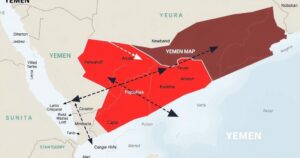Release of Hostages Marks Critical Moment in Ongoing Israel-Hamas Conflict

Hamas released four Israeli women hostages in a significant truce move, while Israel freed 70 Palestinian prisoners. The situation reflects ongoing negotiations aimed at a broader ceasefire, with humanitarian implications amid rising tensions and distrust. Analysts remain skeptical regarding the durability of the agreement, as the conflict has profound humanitarian consequences.
On Saturday, Hamas militants released four Israeli women hostages, adhering to a truce arrangement in the ongoing conflict in Gaza. This significant event took place in a public square in Gaza City, where armed fighters displayed their strength amidst a gathered crowd. The Israeli military later confirmed the reception of the hostages, indicating the retrieval by Red Cross personnel in vehicles specifically allocated for this handover.
In conjunction with the hostages’ release, reports surfaced indicating that Israel had liberated 70 Palestinian prisoners, who were transferred to Egypt under the terms of a ceasefire deal. Palestinian sources subsequently indicated that an additional 200 Palestinian prisoners were set to be released in exchange for the women held by Hamas. The Israeli women had been captives for over 15 months since the attack on Israel on October 7, 2023.
Bassem Naim from Hamas conveyed hope that displaced Palestinians could begin returning to their northern homes following these releases. Despite the ongoing humanitarian crisis, the truce has facilitated an influx of essential supplies into Gaza, amidst concerns regarding the operations of the UN agency for Palestinian refugees, which is set to close by January 2025.
The hostages’ return is part of a ceasefire brokered by Qatar and the United States, which introduced a three-phase exchange process, though many remain apprehensive about its execution. The agreement is expected to ultimately foster the cessation of hostilities, although there are lingering concerns regarding the frailty of such negotiations given the duration of the conflict and the lack of trust between both parties.
Following the initial hostages’ return, 33 individuals are anticipated to be released over the next weeks as part of a staggered plan involving roughly 1,900 Palestinians. Analysts remain skeptical about the future of this agreement due to the complexities involved. The earlier attack saw a total of 251 hostages taken, with ongoing casualties from the conflict continuing to rise.
The information provided outlines the current status of the Israel-Hamas conflict, focusing on the recent hostage release amidst a fragile ceasefire. This conflict escalated dramatically following the October 7, 2023, attack by Hamas, which initiated a series of retaliatory actions by Israel leading to significant casualties and displacements in Gaza. Understanding the humanitarian implications of the ceasefire and the complexities of the hostage negotiations is essential to grasp the ongoing dynamics in the region.
In conclusion, the release of hostages marks a critical moment in the ongoing negotiations between Israel and Hamas amidst the fragile ceasefire. Despite the current exchanges, deep-rooted mistrust continues to pose challenges for any sustained peace. The humanitarian crisis in Gaza remains dire, emphasizing the need for effective resolutions to restore stability and address the needs of displaced populations.
Original Source: www.arabnews.com








